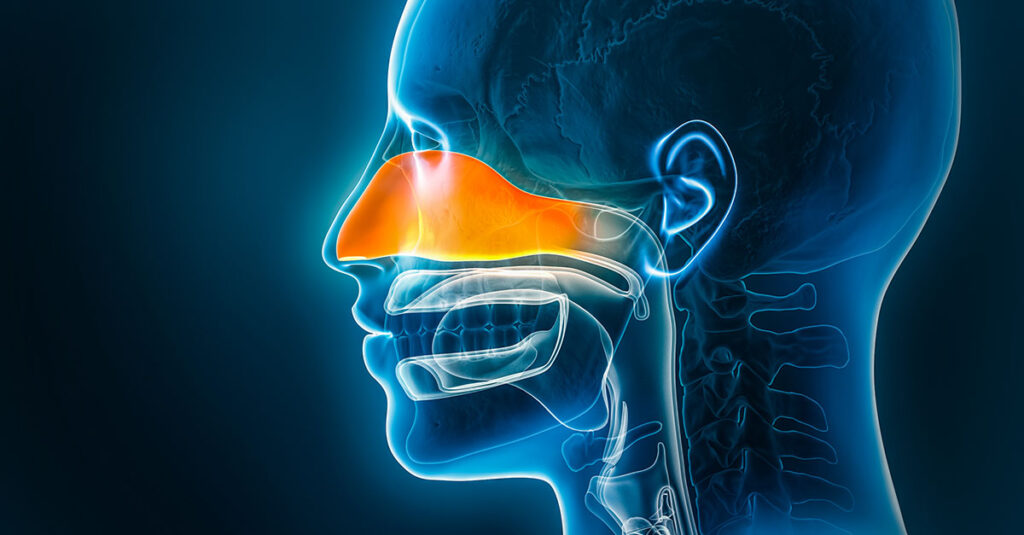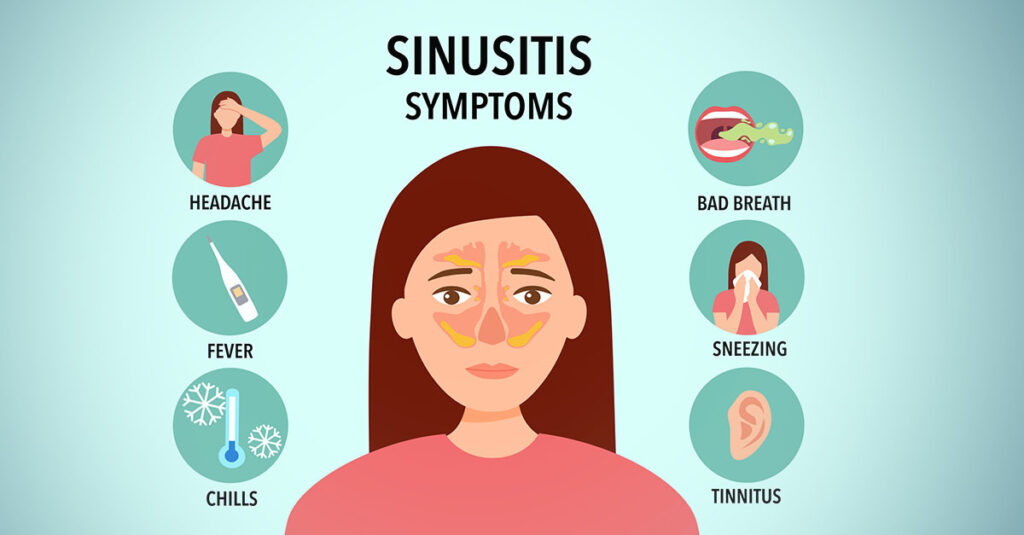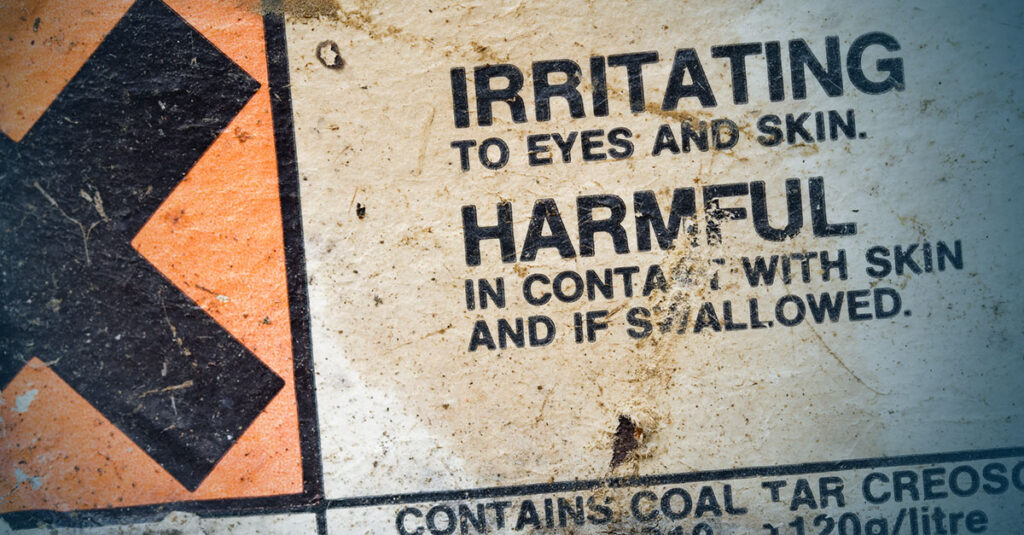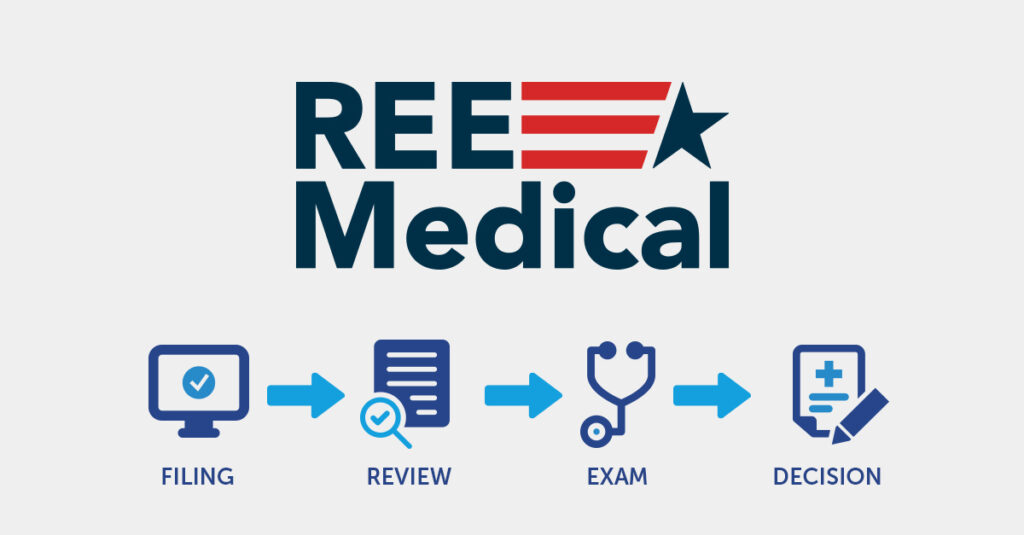Many veterans experience chronic sinus problems that began or worsened during military service. Understanding how the VA rating for sinusitis works allows veterans to recognize what medical documentation the VA reviews when evaluating these claims.
Table of Contents
- Understanding How the VA Rates Sinusitis
- What Medical Documentation the VA Reviews
- How the Claims Process Works for Sinusitis
- Common Reasons Sinusitis Claims Receive Unfavorable Decisions
- The Role of Comprehensive Medical Documentation
TL;DR
- The VA rates sinusitis from 0% to 50% based on the frequency of incapacitating episodes requiring bed rest and medical treatment
- The VA evaluates documented episodes where symptoms completely prevent normal functioning, rather than daily discomfort
- Secondary conditions related to sinusitis may also be evaluated for disability ratings
- Environmental exposures during service may establish presumptive service connection under recent legislation
- Comprehensive medical documentation allows the VA to accurately assess the full scope of a veteran’s condition
- Disability Benefits Questionnaires (DBQs) completed by qualified healthcare providers offer standardized documentation that aligns with VA evaluation criteria

Understanding How the VA Actually Rates Your Sinusitis
The VA rating for sinusitis follows specific diagnostic criteria outlined in the VA’s Schedule for Rating Disabilities. The VA evaluates chronic sinusitis under Diagnostic Code 6510, which focuses on the frequency and severity of “incapacitating episodes.”
An incapacitating episode, as defined by VA criteria, refers to periods when sinusitis symptoms are severe enough to require bed rest and physician-prescribed treatment. The VA does not assign ratings based solely on chronic nasal congestion or daily sinus pressure.
| VA Rating | Bad Episodes Per Year | What That Actually Means |
| 50% | 6 or more | Frequent episodes requiring multiple interventions throughout the year |
| 30% | 3 to 5 | Regular episodes that significantly disrupt normal activities |
| 10% | 1 to 2 | Occasional episodes documented with medical treatment |
| 0% | None | Condition present on diagnostic imaging but without incapacitating episodes |
What Qualifies as an Incapacitating Episode
The VA’s rating criteria for sinusitis specify that incapacitating episodes must involve both inability to perform normal activities and medical intervention. General discomfort or over-the-counter medication use does not meet this threshold.
Consider a hypothetical scenario: John, a veteran, experiences severe sinus infections four times annually. During each episode, facial pain prevents concentration, work attendance becomes impossible, and he requires 3-4 days of bed rest while antibiotics take effect. His ENT specialist documents dates, prescriptions, and work absences. This pattern of functional limitation aligns with the VA’s 30% rating criteria for sinusitis.
Secondary Conditions Related to Sinusitis
Chronic sinusitis may cause or aggravate other medical conditions. Sleep apnea resulting from chronic nasal obstruction, hearing problems from eustachian tube dysfunction, or chronic headaches from sinus pressure may each warrant separate VA ratings as secondary conditions when medical evidence establishes the connection.
Veterans navigating the VA disability rating system often find that understanding condition-specific criteria helps clarify what medical documentation the VA needs for accurate evaluation.
What Medical Documentation the VA Reviews
A sinusitis diagnosis alone does not establish a VA rating. The VA reviews medical records to determine episode frequency, treatment history, and the connection between current symptoms and military service.
Service Connection Requirements
The VA evaluates three elements when determining service connection:
- Current diagnosis: Medical documentation confirming chronic sinusitis from a healthcare provider
- In-service event or exposure: Evidence of circumstances during military service that could have caused or aggravated the condition
- Medical nexus: Professional medical opinion establishing that the current condition is related to military service
Environmental factors during service play a significant role in sinusitis claims. Veterans who served in areas with burn pit exposure, frequent sandstorms, or occupational chemical exposures may have stronger medical nexus arguments. The VA has compiled a Burn Pit Registry that documents exposure locations, and recent legislation has established presumptive service connection for certain respiratory conditions related to toxic exposures.
Independent medical evaluations can provide objective medical opinions that clarify whether a condition is related to military service. Healthcare professionals familiar with military environmental exposures can analyze service records, deployment history, and current medical findings to provide opinions on whether a condition is “at least as likely as not” (50% probability or greater) related to military service.
The quality and comprehensiveness of medical documentation significantly impacts VA evaluations. Understanding the importance of medical evidence in VA disability claims helps clarify why thorough documentation matters.

Military Records That Support Sinusitis Claims
Service medical records documenting sinus problems, respiratory issues, or environmental exposures during active duty strengthen sinusitis claims. Even brief mentions of nasal congestion, sinus infections, or breathing difficulties in service treatment records can support current claims.
Deployment records showing service in Iraq, Afghanistan, or other locations with documented environmental hazards provide important context. In 2022, VA Secretary Denis McDonough announced service connection recognition for “asthma, sinusitis, rhinitis and rare respiratory cancers” through the PACT Act, demonstrating the VA’s evolving understanding of toxic exposure impacts.
How Claims Are Evaluated: Initial vs. Increased Ratings
The VA evaluates different claim types according to different standards. Understanding these distinctions helps veterans recognize which type of claim their situation requires.
Initial Claims for Sinusitis
Initial claims represent the first request for service connection for chronic sinusitis. These claims require documentation of all three service connection elements: current diagnosis, in-service event or exposure, and medical nexus evidence connecting the two.
Understanding the differences between initial and increased claims helps veterans recognize what documentation each type requires.
Claims for Increased Ratings
Veterans with existing service-connected sinusitis ratings who experience worsening symptoms may pursue increased rating claims. The VA evaluates medical evidence showing symptom progression since the last rating decision.
Consider this scenario: Sarah, a veteran, received a 10% rating for chronic sinusitis based on 1-2 incapacitating episodes annually. Three years later, her condition has progressed to 6 episodes per year, and she has developed sleep apnea from chronic nasal obstruction. Her increased claim includes updated CT scans showing disease progression, hospital records, sleep study results, and an independent medical evaluation linking her sleep apnea to chronic nasal congestion from sinusitis. This documented progression allows the VA to evaluate whether a combined rating adjustment may be appropriate.
According to VA procedures, benefits for increased ratings begin from the date the VA receives the claim, not when symptoms actually worsened. This timing makes early documentation of worsening conditions important.
Clear evidence showing increased episode frequency, new related complications, or reduced treatment effectiveness compared to previous rating periods supports increased rating claims. Disability Benefits Questionnaires completed by qualified healthcare providers can document this progression thoroughly.
Many veterans encounter obstacles due to documentation issues. Learning about common reasons VA disability claims get denied can help veterans avoid these pitfalls.

Why Some Sinusitis Claims Receive Unfavorable Decisions
The most common reason for denied or under-rated sinusitis claims is inadequate medical documentation that does not address the specific criteria VA raters evaluate. Healthcare providers unfamiliar with VA evaluation standards may document symptoms in general terms rather than the specific functional limitations and episode frequencies the VA reviews.
Medical Documentation Standards
Effective medical documentation for VA sinusitis claims includes:
- Specific documentation of incapacitating episodes with dates
- Records of antibiotic treatments prescribed during episodes
- Descriptions of functional limitations during episodes (inability to work, need for bed rest)
- CT scans or other diagnostic imaging showing sinus disease
- Treatment history including medications, surgeries, and their effectiveness
Healthcare providers experienced with VA disability evaluations understand the distinction between treating a condition and documenting it according to VA rating criteria. These providers document symptoms in the specific terms and formats VA raters evaluate.
Supplemental Claims vs. Appeals
According to the VA, veterans who receive unfavorable decisions have several review options. Supplemental claims allow veterans to submit new and relevant evidence that addresses the VA’s concerns from the previous decision. Appeals challenge the VA’s interpretation of existing evidence.
New medical evaluations, updated treatment records, or additional service connection evidence typically work well in supplemental claims, as they provide new information for the VA to review.

Comprehensive Medical Evaluations and DBQs
The Disability Benefits Questionnaire (DBQ) for sinusitis provides standardized documentation that captures medical information in the format the VA uses for evaluation. These forms address the specific diagnostic criteria VA raters apply when determining disability percentages.
A comprehensive sinusitis DBQ documents:
- Frequency of incapacitating episodes over the past year
- Patterns of antibiotic usage and other treatments
- Surgical interventions and their outcomes
- Specialist consultations and recommendations
- Physical examination findings
- Diagnostic test results (CT scans, endoscopy findings)
- Medical opinion regarding service connection
Consider this hypothetical: Mike, a veteran, initially received a DBQ completed by a general practitioner who checked boxes without detailed explanations. His claim received an unfavorable decision for lack of evidence. He then obtained a comprehensive DBQ from an ENT specialist experienced with VA evaluations. This specialist documented all incapacitating episodes over the past year, specific antibiotic treatments, CT scan findings showing chronic inflammation, and provided a detailed medical opinion connecting the condition to burn pit exposure during deployment. This thorough documentation provided the VA with clear, comprehensive evidence for evaluation.

Secondary Conditions That May Relate to Sinusitis
Chronic sinusitis rarely exists in isolation. Sleep apnea, hearing loss, chronic headaches, and mental health conditions may all develop as consequences of chronic sinus disease. When medical evidence establishes that a service-connected condition caused or aggravated another condition, the VA may evaluate the secondary condition separately.
Comprehensive medical evaluations that identify and document these connections allow the VA to assess the full scope of how sinusitis affects a veteran’s health and functioning.
Environmental Exposures and Presumptive Service Connection
Recent legislative changes have significantly expanded recognition of respiratory conditions related to military environmental exposures. Veterans exposed to burn pits, toxic chemicals, or occupational particulates during service may now have stronger paths to service connection.
Burn Pit Exposure
Veterans who served in Iraq, Afghanistan, or other locations with documented burn pit exposure can utilize the VA’s burn pit registry to document their exposure. The PACT Act has made it easier to establish service connection for conditions related to toxic exposures, including respiratory and sinus problems from burn pit smoke inhalation.
According to VA data, 13,002 of the 16,000 veterans who served at K2 (an airbase supporting operations in Afghanistan) have enrolled in VA health care, and nearly 12,000 have received disability ratings for linked conditions, as reported by Military.com. This demonstrates the significant impact of environmental exposure claims under recent legislation.

Occupational Chemical Exposures
Military occupational specialties involving chemicals, dust, or particulates may support sinusitis service connection claims. Mechanics, construction workers, and personnel working around aircraft or industrial equipment often have well-documented occupational exposure histories that can support medical nexus opinions.
Detailed job descriptions, base location records, and any available environmental exposure documentation strengthen these claims. These occupational connections can be equally compelling as burn pit exposure when properly documented.
When Surgical Treatment Does Not Provide Relief
Failed sinus surgeries provide additional evidence of condition severity. Follow-up CT scans showing continued or worsened disease despite surgical intervention document that the condition remains severe and treatment-resistant.
Temporary Total Ratings During Surgical Recovery
According to VA regulations, major sinus surgeries may qualify for temporary 100% disability ratings during convalescence periods. These temporary ratings typically last one to three months depending on the procedure’s complexity and recovery requirements. The temporary rating provides full compensation during the recovery period when veterans cannot work, then reverts to the permanent rating once healing is complete.

How REE Medical Coordinates Comprehensive Medical Documentation
When sinusitis involves multiple related conditions or environmental exposures, comprehensive medical documentation becomes particularly important for accurate evaluation. REE Medical coordinates connections between veterans and independent healthcare providers who specialize in objective medical evaluations and Disability Benefits Questionnaires (DBQs).
REE Medical’s provider network includes specialists who understand the relationships between primary conditions like sinusitis and secondary conditions such as sleep disorders, hearing problems, and chronic headaches. These providers accurately document exposure timelines and offer independent medical opinions that describe how service exposures relate to current medical findings.
REE Medical connects veterans with independent, licensed medical professionals who provide thorough, accurate DBQs and independent medical evaluations. REE Medical does not prepare, present, or prosecute VA disability claims. All rating decisions are made solely by the Department of Veterans Affairs.
Learn more about how REE Medical coordinates medical documentation that meets VA evaluation standards.
Key Takeaways About VA Rating for Sinusitis
The VA rating for sinusitis evaluates the frequency and severity of incapacitating episodes documented in medical records. Ratings range from 0% to 50% based on how often sinusitis symptoms become severe enough to require bed rest and medical treatment.
Comprehensive medical documentation allows the VA to accurately assess condition severity. Healthcare providers familiar with VA evaluation criteria document symptoms in the specific formats and terminology VA raters evaluate.
Environmental exposures during service can support sinusitis service connection claims, particularly with recent legislative changes under the PACT Act. Burn pit exposure, toxic chemical exposure, and occupational particulate exposure all provide potential pathways for establishing service connection.
Veterans experiencing chronic sinusitis benefit from thorough medical documentation that reflects the full impact of their condition. Independent medical evaluations and comprehensive DBQs completed by qualified providers allow the VA to accurately assess both primary sinusitis symptoms and any related secondary conditions.
Contact REE Medical to learn about coordinating independent medical documentation for VA sinusitis evaluations.
Disclosure
DISCLAIMER: REE Medical, LLC is not a Veterans Service Organization (VSO) or a law firm and is not affiliated with the U.S. Veterans Administration (“VA”). Results are not guaranteed, and REE Medical, LLC makes no promises. REE Medical’s staff does not provide medical advice or legal advice, and REE Medical is not a law firm. Any information discussed, such as, but not limited to, the likely chance of an increase or service connection, estimated benefit amounts, and potential new ratings, is solely based on past client generalizations and not specific to any one patient. The doctor has the right to reject and/or refuse to complete a Veteran’s Disability Benefit Questionnaire if they feel the Veteran is not being truthful. The Veteran’s Administration is the only agency that can make a determination regarding whether or not a Veteran will receive an increase in their service-connected disabilities or make a decision on whether or not a disability will be considered service-connected. This business is not sponsored by, or affiliated with, the United States Department of Veterans Affairs, any State Department of Military and Veterans Affairs, or any other federally chartered veterans service organization.

